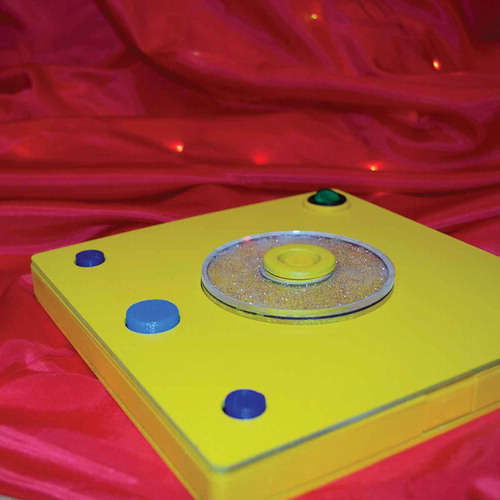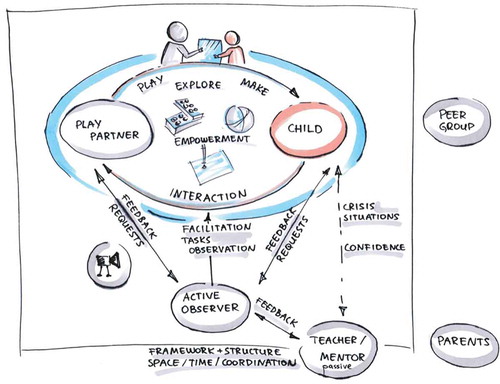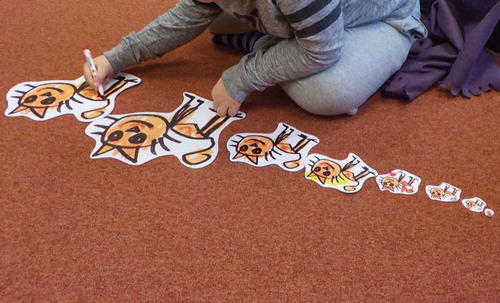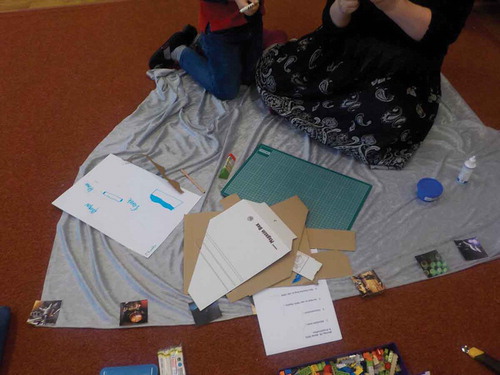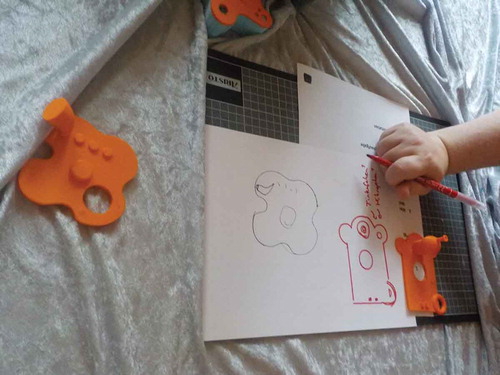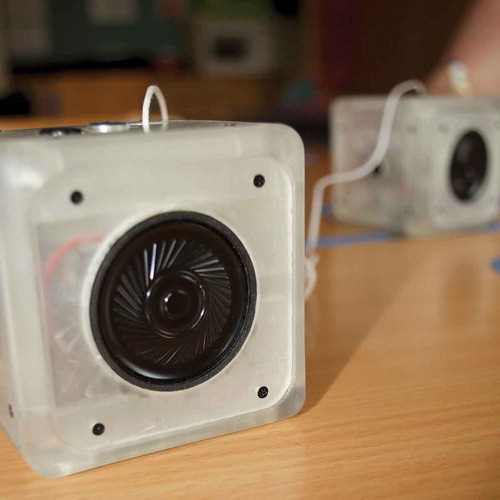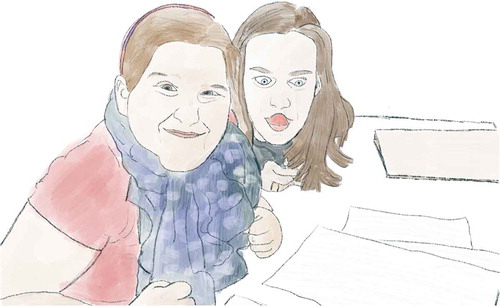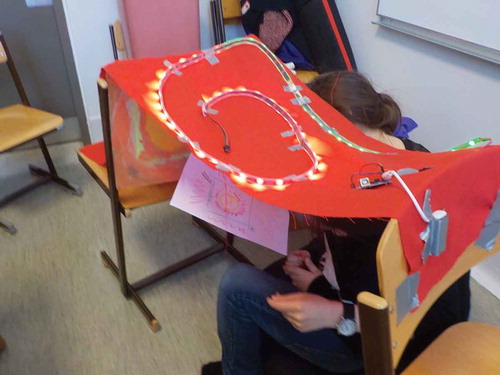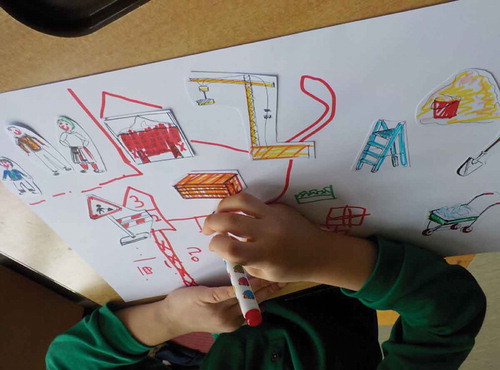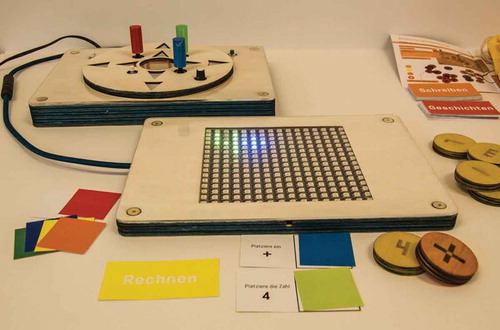Figures & data
Table 1. Research partners in the first year of OutsideTheBox together with age, diagnosis, design method used, name of the finished object and number of meetings; FW: Future Workshops, CI: Co-Operative Inquiry; MD: Makers & Drama; AS: Asperger Syndrome.
Figure 4. Playing out a use scenario with the second low-fidelity prototype of the thinking machine.
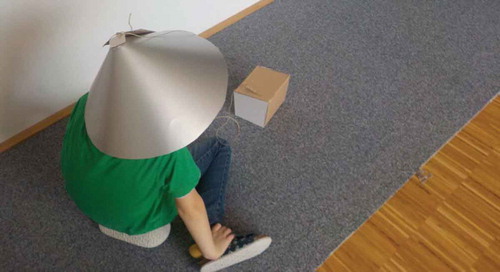
Figure 6. Different materials we used with Claude during the ideation and conceptualization phases bricks and modeling phase.
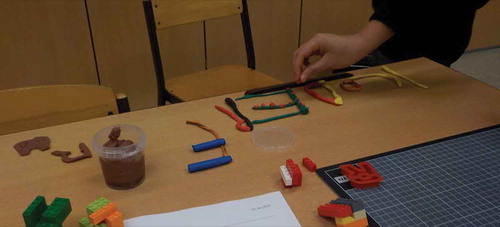
Figure 13. The rattle alarm system – Developed together with Mia – left: cushion, middle: alarm clock, right: pressure mat.
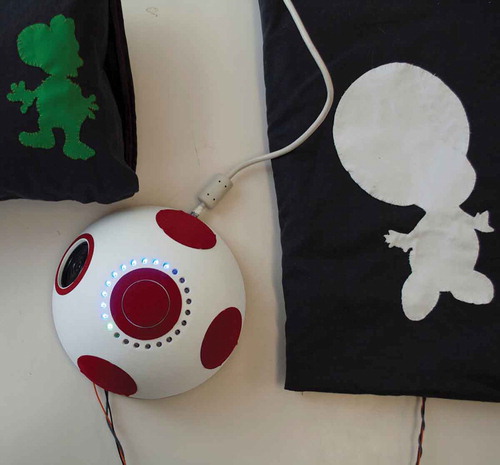
Figure 15. Time machine in the foreground, the navigation interface, in the background, the immersive light blanket.
